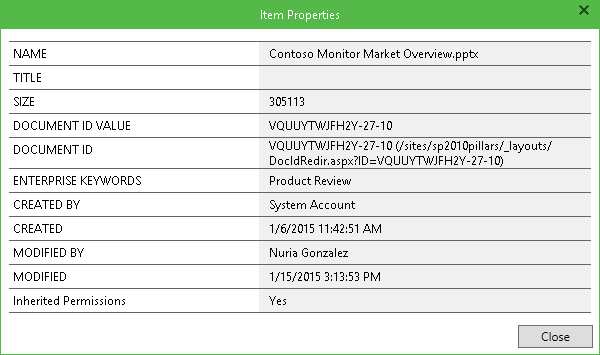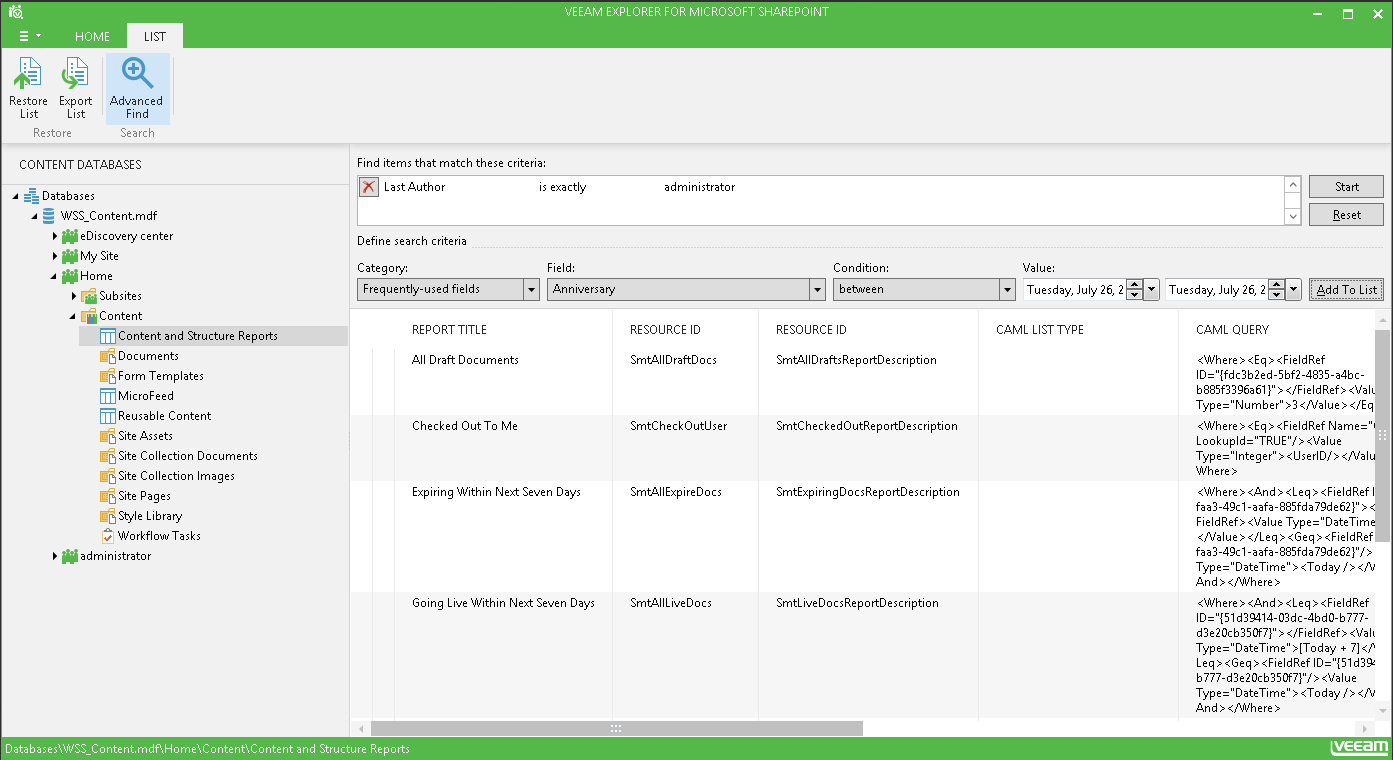This section describes how to use Veeam Explorer for Microsoft SharePoint to browse the database content, open a document or view its properties, use simple or advanced search capabilities. This functionality is supported in all editions of Veeam Backup & Replication.
You can use the navigation pane that displays available containers in a hierarchical representation. In the navigation pane you can see the databases, sites, subsites, libraries, and lists that are available in a particular container. When you select a container node, you can browse its contents in the preview pane.
Veeam Explorer for Microsoft SharePoint also allows you to browse associated Microsoft SharePoint items — attached files and document versions. For example, if you maintain your document version history, you can right-click the item and select View History to examine the list of all stored document versions. If you want to open the list of attachments for an item, from its shortcut menu select View Attachments.
Viewing Properties and Opening Files
To view properties of a document or an item, right-click it in the preview pane on the right and select View Properties. Properties will be displayed in a separate window.

To open a document, right-click it in the preview pane and from the shortcut menu select Open. The document will be opened using an associated application.
You can use the search abilities, which allows you to find items matching a specified search criteria. The search field is located at the top of the preview pane, For example, you can select a document library and search for veeam software to find all the documents that contain the words starting with 'veeam' or 'software' in the document name or document text. Search results for content databases and sites will include all child items (that is, subsites, lists and list objects).
|
When you search for a phrase, the search will by default locate items that contain any search terms in the phrase, not the phrase itself. To find the exact phrase, use double quotes, for example, “veeam software”. |
You can select the whole content database or several databases at once to get more results. You can select a specific node (for example, a document library) inside a specific database and a site to narrow the search.
You can narrow your search results down by specifying various search criteria inside the search box in the criteria:value format. For example, to find in the list of decisions all items that require approval, you can use the following search query: status:pending approval. You can also use logical operators such as AND, OR and NOT (must be typed in uppercase letters) and wildcard characters such as * and ?. These search criteria are similar to those used for searching in Microsoft SharePoint. For more information, see, for example, this Microsoft SharePoint help topic.
Using Advanced Find Capabilities
You can also use the Advanced Find command, which is available from the ribbon menu. With this option, you can apply flexible search criteria to selected document library/item list, like document author, creation or modification date, file extension, and so on, easily building any search query you need. For example, to find all files modified prior to the certain date, you can do the following:
- Select the required node from the content tree on the left, then click Advanced Find.
In the Define search criteria section of the search window on the right, select the Category for the new search filter. This will instruct search to look through the corresponding content property fields. You can search through Document fields, Frequently Used fields, and so on.
- From the Field list, select the field to filter by (for example, Last Author).
- From the Condition list, select the one you need – this can be less than (chosen for this example), equal to, between, and so on.
- Specify the Value for the date to look for, and click Add to List. Configured filter will be shown in the above pane.
Click Start to search using the new filter. The results will be displayed in the main pane.
To remove a filter, click on the cross mark next to it; to remove all configured filters, click Reset.









